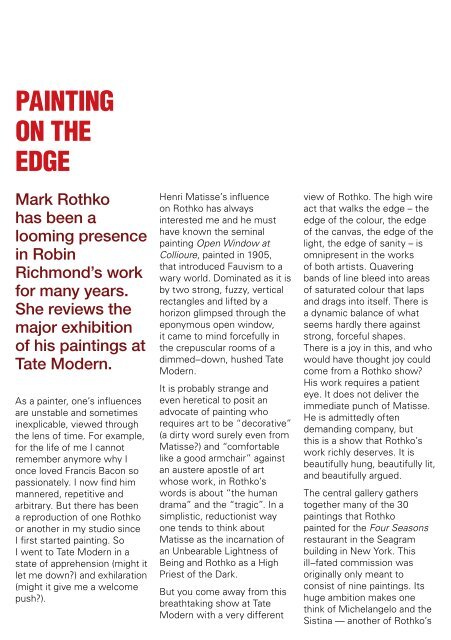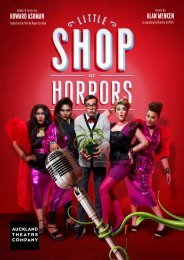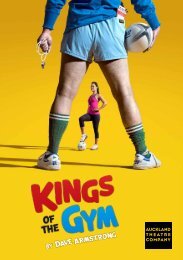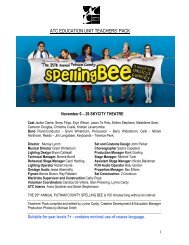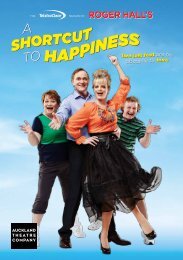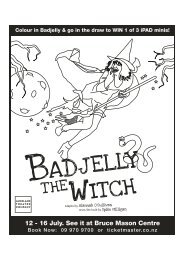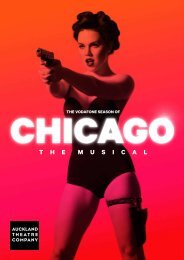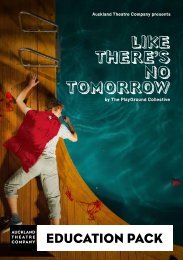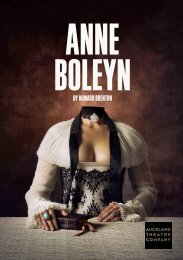Create successful ePaper yourself
Turn your PDF publications into a flip-book with our unique Google optimized e-Paper software.
PAINTING<br />
oN THe<br />
eDGe<br />
Mark Rothko<br />
has been a<br />
looming presence<br />
in Robin<br />
Richmond’s work<br />
for many years.<br />
She reviews the<br />
major exhibition<br />
of his paintings at<br />
Tate Modern.<br />
As a painter, one’s influences<br />
are unstable and sometimes<br />
inexplicable, viewed through<br />
the lens of time. For example,<br />
for the life of me I cannot<br />
remember anymore why I<br />
once loved Francis Bacon so<br />
passionately. I now find him<br />
mannered, repetitive and<br />
arbitrary. But there has been<br />
a reproduction of one Rothko<br />
or another in my studio since<br />
I first started painting. So<br />
I went to Tate Modern in a<br />
state of apprehension (might it<br />
let me down?) and exhilaration<br />
(might it give me a welcome<br />
push?).<br />
Henri Matisse’s influence<br />
on Rothko has always<br />
interested me and he must<br />
have known the seminal<br />
painting Open Window at<br />
Collioure, painted in 1905,<br />
that introduced Fauvism to a<br />
wary world. Dominated as it is<br />
by two strong, fuzzy, vertical<br />
rectangles and lifted by a<br />
horizon glimpsed through the<br />
eponymous open window,<br />
it came to mind forcefully in<br />
the crepuscular rooms of a<br />
dimmed–down, hushed Tate<br />
Modern.<br />
It is probably strange and<br />
even heretical to posit an<br />
advocate of painting who<br />
requires art to be “decorative”<br />
(a dirty word surely even from<br />
Matisse?) and “comfortable<br />
like a good armchair” against<br />
an austere apostle of art<br />
whose work, in Rothko’s<br />
words is about “the human<br />
drama” and the “tragic”. In a<br />
simplistic, reductionist way<br />
one tends to think about<br />
Matisse as the incarnation of<br />
an Unbearable Lightness of<br />
Being and Rothko as a High<br />
Priest of the Dark.<br />
But you come away from this<br />
breathtaking show at Tate<br />
Modern with a very different<br />
view of Rothko. The high wire<br />
act that walks the edge – the<br />
edge of the colour, the edge<br />
of the canvas, the edge of the<br />
light, the edge of sanity – is<br />
omnipresent in the works<br />
of both artists. Quavering<br />
bands of line bleed into areas<br />
of saturated colour that laps<br />
and drags into itself. There is<br />
a dynamic balance of what<br />
seems hardly there against<br />
strong, forceful shapes.<br />
There is a joy in this, and who<br />
would have thought joy could<br />
come from a Rothko show?<br />
His work requires a patient<br />
eye. It does not deliver the<br />
immediate punch of Matisse.<br />
He is admittedly often<br />
demanding company, but<br />
this is a show that Rothko’s<br />
work richly deserves. It is<br />
beautifully hung, beautifully lit,<br />
and beautifully argued.<br />
The central gallery gathers<br />
together many of the 30<br />
paintings that Rothko<br />
painted for the Four Seasons<br />
restaurant in the Seagram<br />
building in New York. This<br />
ill–fated commission was<br />
originally only meant to<br />
consist of nine paintings. Its<br />
huge ambition makes one<br />
think of Michelangelo and the<br />
Sistina — another of Rothko’s<br />
(1)<br />
(2) (3)<br />
heroes. And it terminally taxed<br />
Rothko’s allergy to the elitist<br />
New Yorkers who would<br />
have dined under these huge,<br />
smouldering canvases.<br />
He paid back his advance for<br />
these works, never delivered<br />
to our eternal gratitude, kept<br />
them, and now they belong to<br />
the world of museum goers,<br />
not ladies who lunch. Eight<br />
are now culled from the Tate<br />
collection; the others are a<br />
selection from the Kawamura<br />
Memorial Museum and the<br />
National Museum of Art in<br />
Washington. These works<br />
are ravishing. The eye loses<br />
focus and one’s gaze melts<br />
into the canvases, only<br />
to be “awoken” by small,<br />
dangerous brush fires where<br />
one colour meets another.<br />
In the last room, the Black on<br />
Grey paintings from 1970 –<br />
the year of his suicide – are a<br />
revelation. These supposedly<br />
minimalist paintings have<br />
an inner glow where “grey”<br />
meets “black” that is<br />
transcendent. Thinking about<br />
the “moon walk” two years<br />
before, these pictures seem<br />
to gaze out into the empty<br />
space of the universe from<br />
the brightly–lit surface of<br />
the moon. I think these ARE<br />
horizons. His is a truly human<br />
presence in a world empty of<br />
humans. He may have lived<br />
on the edge – and maybe this<br />
is the stuff of myth – but here<br />
in this final gallery we see a<br />
beautifully crafted and subtly<br />
calibrated balance of emotion<br />
and thought. This is the show<br />
of the year.<br />
Published with permission<br />
from A WORLD TO WIN<br />
(www.aworldtwin.net)<br />
and Robin Richmond<br />
www.staff.city.ac.uk/hampton/<br />
richmond/index.htm<br />
First published on September 27, 2008.<br />
(1) Mark Rothko Sketch for “Mural No.4”<br />
(Orange on Maroon) 1958<br />
(2) Mark Rothko Mural, Section 3<br />
(Black on Maroon) 1959<br />
(3) Mark Rothko Untitled<br />
(Black on Grey) 1969/70


